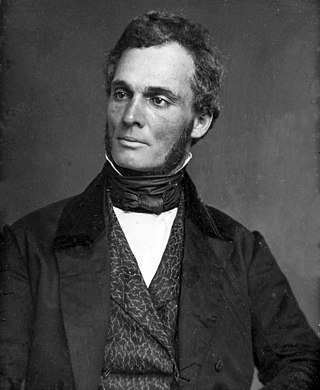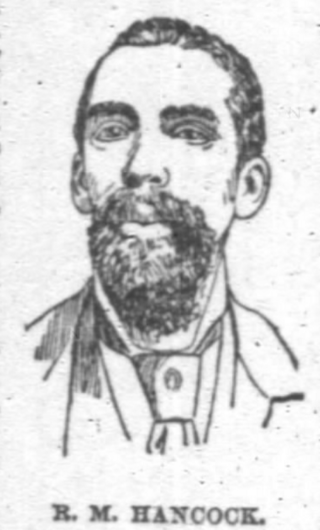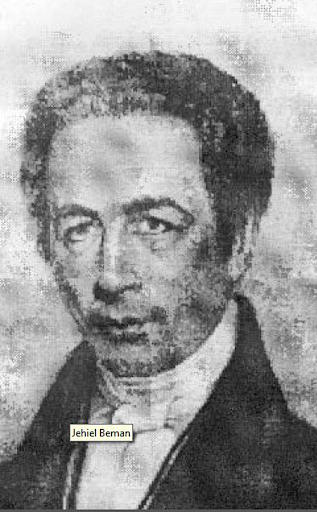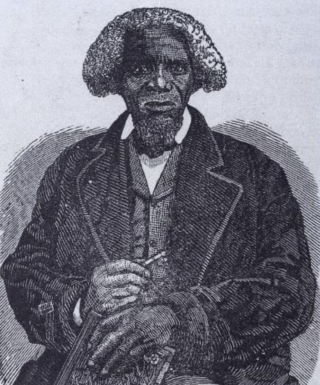
Reverend Leonard Bacon was an American Congregational preacher and writer. He held the pulpit of the First Church New Haven and was later professor of church history and polity at Yale College.

Robert Purvis was an American abolitionist in the United States. He was born in Charleston, South Carolina, and was likely educated at Amherst Academy, a secondary school in Amherst, Massachusetts. He spent most of his life in Philadelphia, Pennsylvania. In 1833 he helped found the American Anti-Slavery Society and the Library Company of Colored People. From 1845 to 1850 he served as president of the Pennsylvania Anti-Slavery Society and also traveled to Britain to gain support for the movement.
Amos Noë Freeman was an African-American abolitionist, Presbyterian minister, and educator. He was the first full-time minister of Abyssinian Congregational Church in Portland, Maine, where he led a station on the Underground Railroad.

John Pierpont was an American poet, who was also successively a teacher, lawyer, merchant, and Unitarian minister. His poem The Airs of Palestine made him one of the best-known poets in the U.S. in his day. He was the grandfather of J. P. Morgan.

Francis Lewis Cardozo was an American clergyman, politician, and educator. When elected in South Carolina as Secretary of State in 1868, he was the first African American to hold a statewide office in the United States.

Charles Bennett Ray was a prominent African-American minister and abolitionist who owned and edited the weekly newspaper The Colored American. Born in Massachusetts, he spent most of his career and life in New York City.

George Whitaker was an American minister and university president in Texas and Oregon. A native of Massachusetts, he served as the president of Wiley College in Texas, along with Willamette University and Portland University in Oregon. A Methodist trained preacher and graduate of Wesleyan University, he also worked as a pastor across the country in the late 19th century, primarily in New England.

The Mary and Eliza Freeman Houses are historic residences in Bridgeport, Connecticut. The simple, clapboard-covered dwellings were built in 1848 in what became known as Little Liberia, a neighborhood settled by free blacks starting in the first quarter of the nineteenth century. As the last surviving houses of this neighborhood on their original foundations, these were added to the National Register of Historic Places on February 22, 1999. The houses are the oldest remaining houses in Connecticut built by free blacks, before the state completed its gradual abolition of slavery in 1848. The homes and nearby Walter's Memorial A.M.E. Zion Church are also listed sites on the Connecticut Freedom Trail.
Hosea Easton (1798–1837) was an American Congregationalist and Methodist minister, abolitionist activist, and author. He was one of the leaders of the convention movement in New England.
Simeon Jocelyn was an American minister, abolitionist, and activist known for promoting educational opportunities and civil and political rights for African Americans in New Haven, Connecticut, during the 19th century. He is also known for his attempt to establish the United States' first college for African Americans in New Haven, and for his role in the Amistad affair.

The history of Methodism in the United States dates back to the mid-18th century with the ministries of early Methodist preachers such as Laurence Coughlan and Robert Strawbridge. Following the American Revolution most of the Anglican clergy who had been in America came back to England. John Wesley, the founder of Methodism, sent Thomas Coke to America where he and Francis Asbury founded the Methodist Episcopal Church, which was to later establish itself as the largest denomination in America during the 19th century.
Amos A. (Augustus) Phelps (1805–1847) was an American minister and abolitionist.

Richard Mason Hancock was a carpenter and shop foreman and civil rights activist in the American Northeast and Chicago. He was one of few African-American iron works shop foremen during his era.

Hester C. Jeffrey, néeWhitehurst was an African-American activist, suffragist, and community organizer in Rochester, N.Y., and New York City. She is known for her involvement with the Political Equality Club, the Women's Christian Temperance Union, and the National Association of Colored Women's Clubs.

Amos Parker Wilder was an American journalist and diplomat who served as United States Consul General to Hong Kong and Shanghai in the early 20th century.
Abbie K. Mason was a Black American suffragist. She was known as the president of the Woman's Christian Temperance Union (WCTU) and taught the lessons of Frederick Douglass at the Memorial African Methodist Episcopal Zion Church of Rochester, New York.

James Mars was an American slave narrative author and political activist. Born into slavery in Canaan, Connecticut, he gained his freedom in 1811. In 1864, he published his memoir A Life of James Mars, a Slave Born and Sold in Connecticut, Written by Himself—a notable example of the slave narrative genre. His grave is a stop on the Connecticut Freedom Trail. In 2021, Governor Ned Lamont declared May 1 to be James Mars Day in Connecticut.

Bishop Singleton T. Jones was a religious leader in the African Methodist Episcopal Zion Church. When he was ten years old, he was apprenticed to a lawyer and worked for him for four years, after which he found positions at an inn, as a hod carrier, and on a riverboat on the Ohio River. He became a pastor in the 1840s, serving churches throughout Pennsylvania, New Jersey, Maryland, and the District of Columbia. Although he had little education, he taught himself to be an articulate orator. Besides being a pastor to churches, he also edited AME Zion publications, the Zion's Standard and Weekly Review and the Discipline.

Jehiel C. Beman (1791–1858) was an African-American 19th-century minister and abolitionist. He was a leader for suffrage and temperance, and he was an agent for the Underground Railroad in Connecticut. His son Amos Beman was also a prominent abolitionist.

Greensbury Washington Offley was an American slave narrative author and minister. Born into slavery in Maryland and eventually freed, Offley wrote A Narrative of the Life and Labors of the Rev. G. W. Offley, a Colored Man, Local Preacher and Missionary (1859), one of only six slave narratives published in Connecticut.















